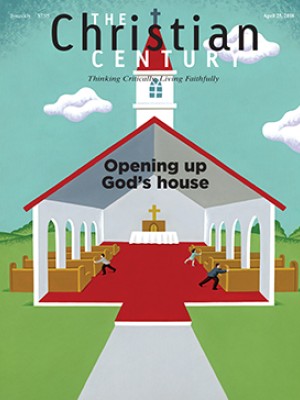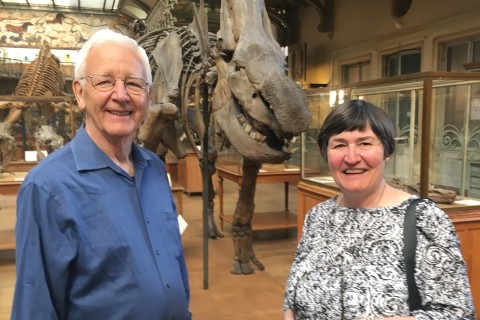Southern California mosques welcome rising number of Latino Muslims
Groups are meeting growing interest through efforts such as Friday prayers in Spanish and #TacoTrucksatEveryMosque events to break Ramadan fasting.
When Mariam Saada teaches new Muslim converts, she notices several common challenges—learning how to pray in Arabic, adjusting to a new diet, giving up old holidays, and dealing with non-Muslim family members.
But for many Spanish speakers who have embraced the religion—which scholars say is an expanding part of the Muslim American community—there’s another hurdle: introductory materials on Islam are usually written in English, not Spanish.
Saada, who offers religious education classes in Spanish in Orange County in California, said Spanish-speaking Muslims are often isolated. “There’s a real language barrier.”
But now, Muslims in Southern California—a region where Latinos are often in the majority—are taking innovative steps to accommodate this growing need by offering translations of classical texts, religious education classes, conferences, and Friday prayer services in Spanish, as well as social events such as halal taco night.
César Domínguez, a teacher with the Los Angeles–based organization La Asociación Latino Musulmana de América, said this development is relatively new.
“I remember, maybe even five years ago, most places didn’t have translations of the Qur’an in Spanish,” he said. “But now you find translations of the Qur’an in Spanish, and even Spanish books on the life of the Prophet Muhammad in most mosques.”
Read our latest issue or browse back issues.
Last summer Domínguez delivered Friday prayer sermons in Spanish at the Islamic Center of Santa Ana, which organizers say was the first mosque in the area to do so.
In addition, several mosques offer classes like Saada’s at the Islamic Society of Orange County in Garden Grove, and Latino Muslims organized a two-day Spanish conference alongside the annual Muslim American Society convention.
The drive for Spanish-language resources on Islam isn’t coming just from Muslims.
“You have Latino Muslims who, once they embrace Islam, their families are curious about why they made this transition,” said Jamaal Zaheen, outreach manager of the Islamic Institute of Orange County in Anaheim. “So we also get our neighbors coming in and asking about Islam.”
The mosque’s translated materials specifically highlight the place of Jesus and Mary in Islam, said Zaheen, as a way to show the parallels with many Latinos’ Catholic heritage.
But for many Spanish speakers, the Internet is the go-to resource. IslamInSpanish, for instance, offers hundreds of educational YouTube videos on topics such as how to pray and feminism. Based in Houston, Texas, IslamInSpanish is “huge” among Muslims in Southern California.
“It’s giving people multimedia alternatives,” she said.
Online resources help with the problem of accessibility. Even though the number of Latino Muslims is on the rise, the community is spread out, making it difficult to get high attendance at events. The Islamic Center of Santa Ana, for instance, averaged about a dozen attendees at its Spanish-language Friday prayers last summer but had 200 views on live-streaming videos of the weekly sermons, according to Lucy Silva, a community leader who helped organize the services.
So local mosques are now working to expand their multimedia capabilities to better serve Spanish-speaking Muslims locally and globally.
Zaheen of the Islamic Institute of Orange County said that the mosque is developing classes in Spanish that will include live streaming. This way, Muslims in Mexico—a community that Latino Muslims in Southern California have cultivated a relationship with—will also have access.
The push for more Spanish resources on Islam is also part of a broader trend toward political cooperation—particularly after the election of Donald Trump.
“During the 2016 primaries, we all heard that Mexicans were rapists and Muslims were terrorists,” said Shakeel Syed, founder of a new organization, the Muslim-Latino Collaborative, which has organized protests of the Muslim ban and the repeal of DACA. “In Orange County, both communities are large in numbers and are being marginalized.”
Another group, Latino Muslim Unity, organized a #TacoTrucksatEveryMosque event for Muslims to break their fast alongside Latinos during the month of Ramadan.
But Reymundo Nour, a Panamanian-born imam of the Islamic Society of Palm Springs, pointed out that while connections between Latinos and Muslims may seem new, there’s plenty of historical overlap. Muslims ruled Spain for more than 800 years, he said, and afterward, many traveled to the colonies of Spain—the Americas—which led to a fusion of Arabic and Spanish languages and of Muslim and Latin American cultures.
“Many Spanish-speaking people believe that in order to be a Muslim you have to be Arab—that you can’t be Mexican,” Nour said. “But I’ve found that when you mention this history to them, it makes them more open, more curious. They say, ‘I didn’t know this was my heritage.’”





